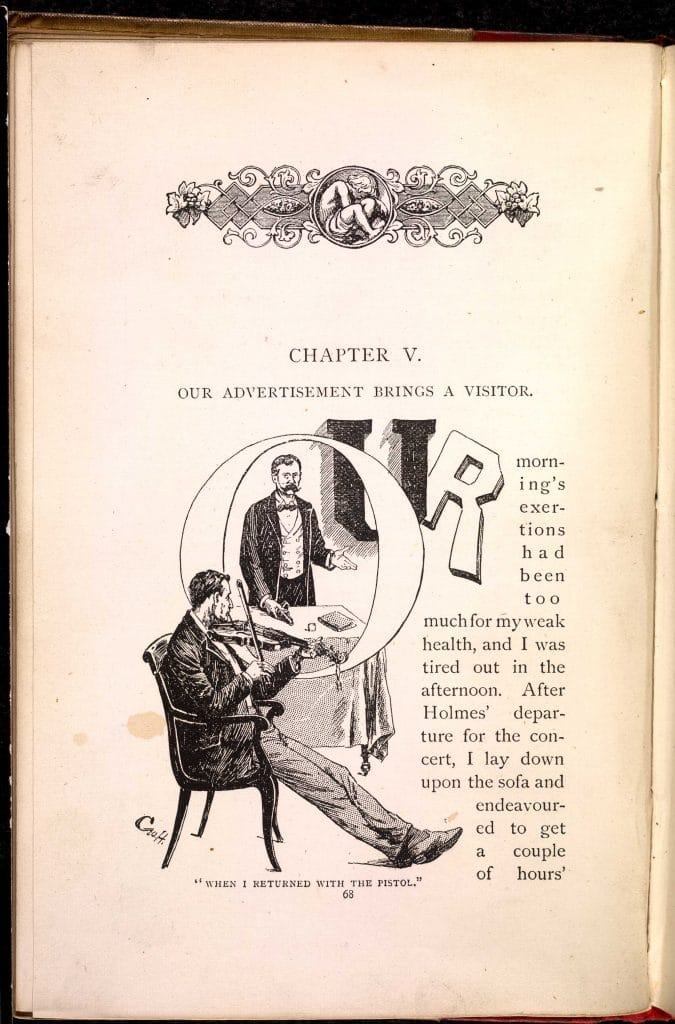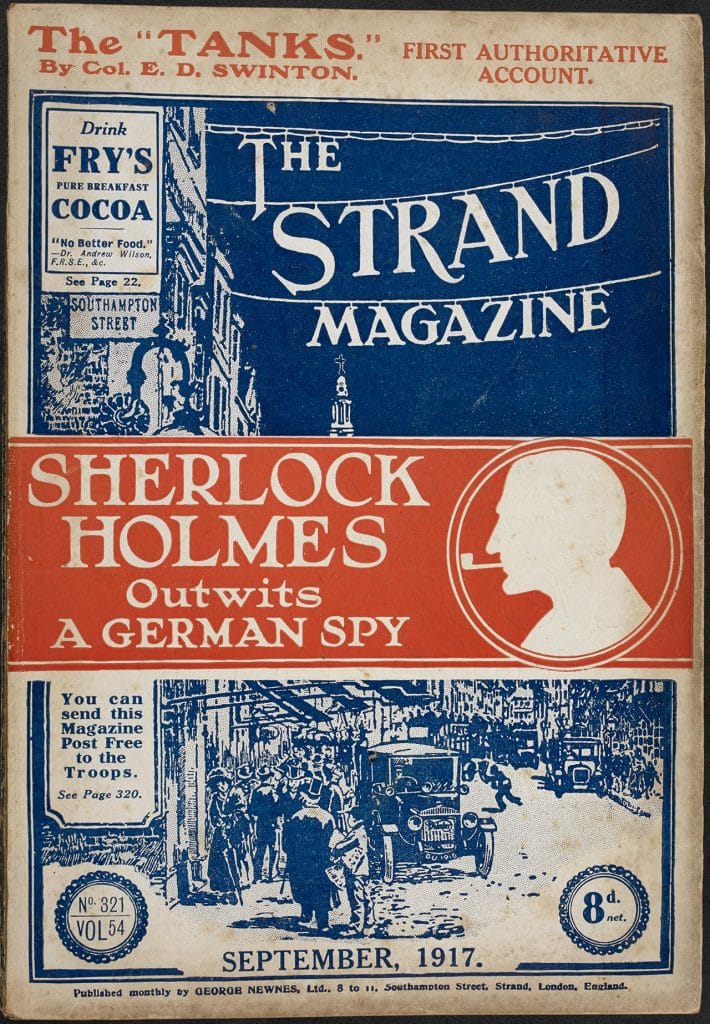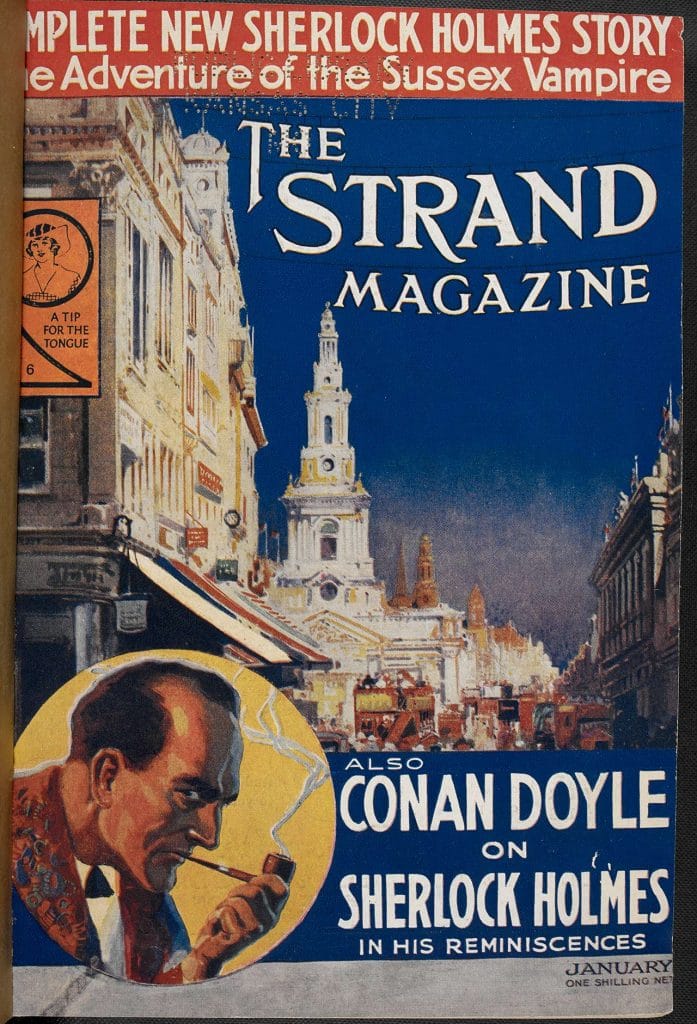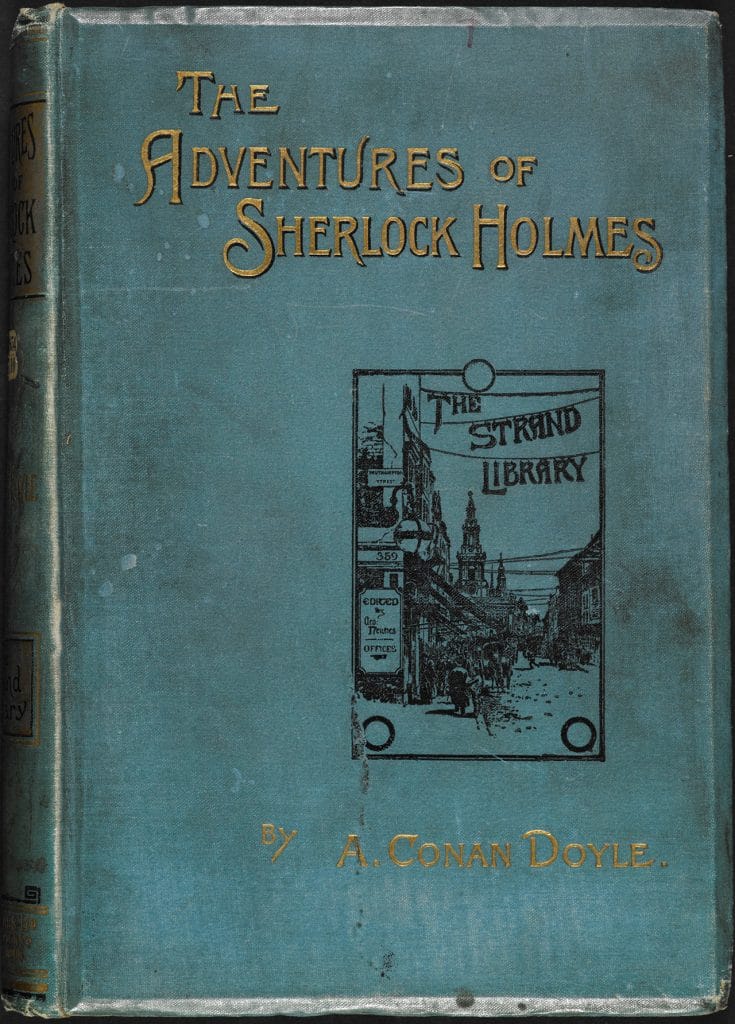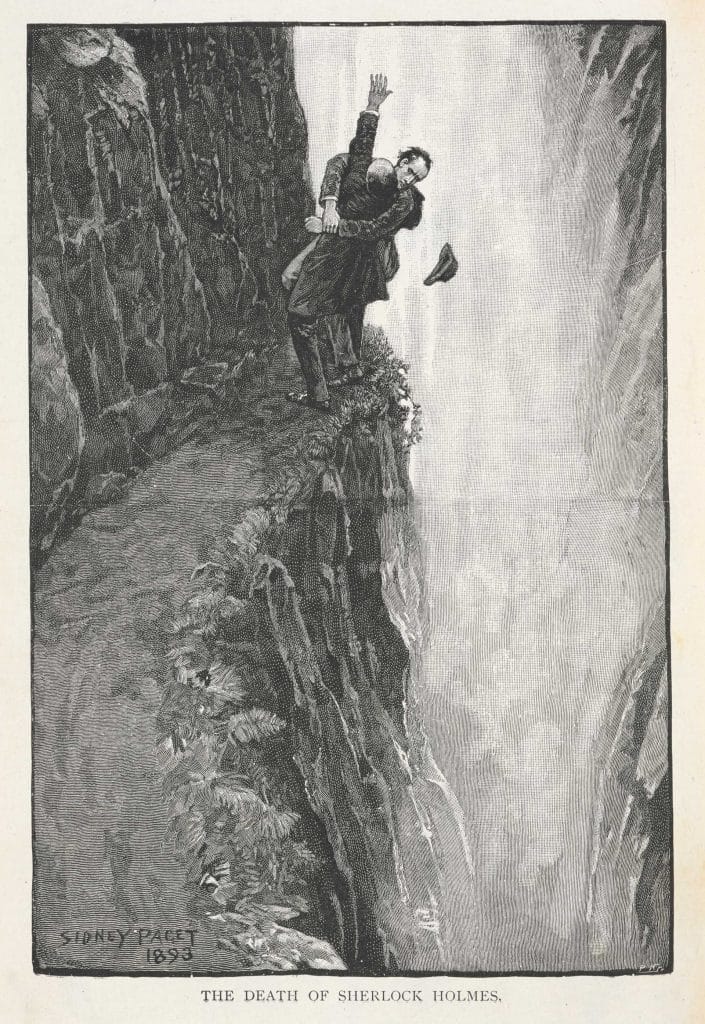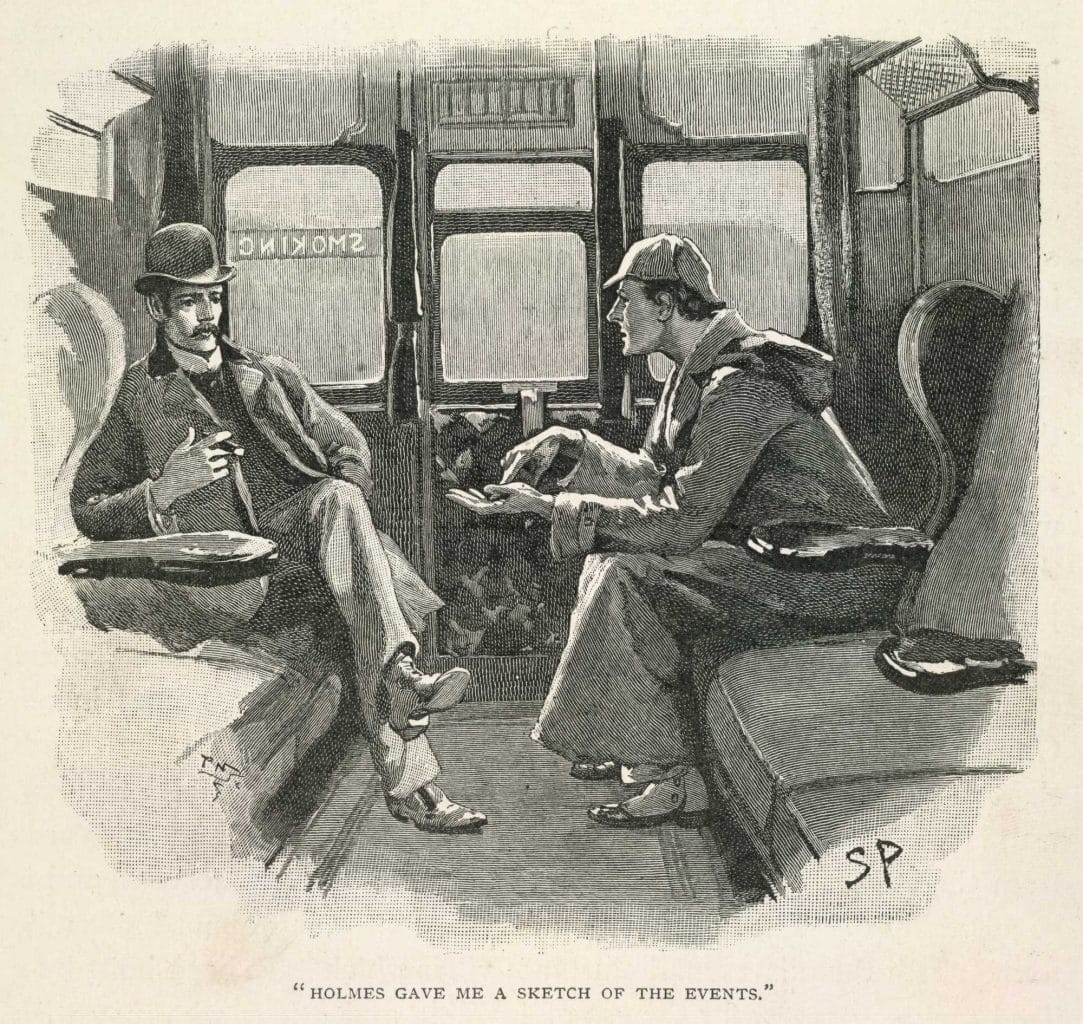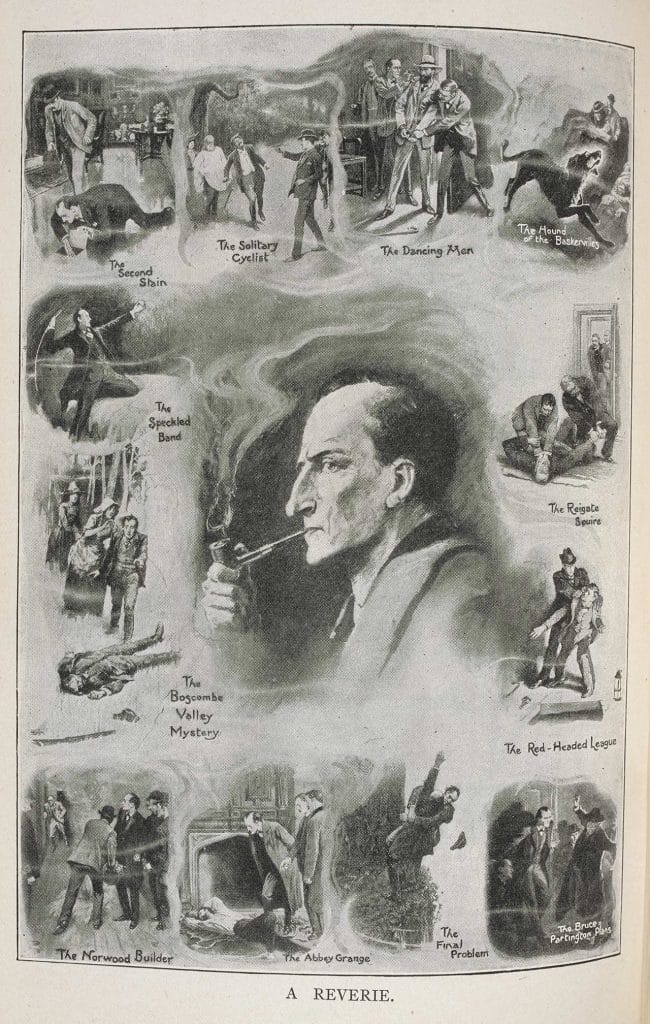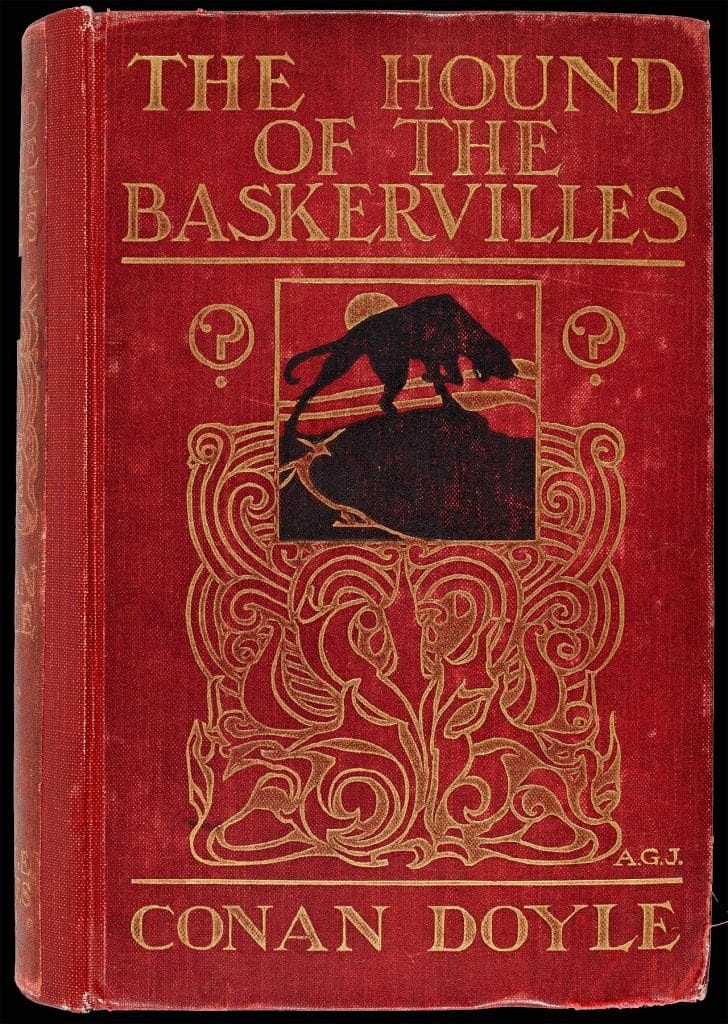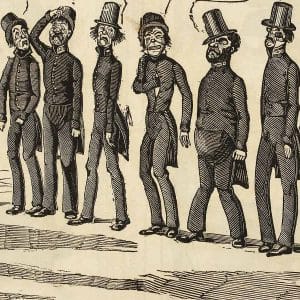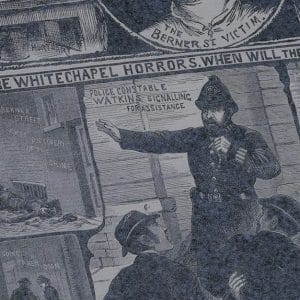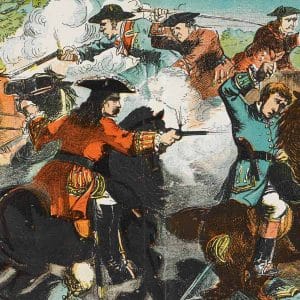
Sherlock Holmes, the world’s most famous literary detective
Why has Sherlock Holmes continued to captivate readers generation after generation, while other fictional detectives of the Victorian period have been forgotten? To investigate, Professor John Sutherland explores shilling shockers, arch criminals, and forensic science.
‘Holmes takes my mind from better things’, Arthur Conan Doyle once complained. His mother sternly objected [1]
He did nothing better, she told him. Posterity has agreed with Mrs Doyle. Sherlock Holmes is not merely the best thing the author did, but one of the best things any author has done. The ‘unofficial consulting detective’, operating from his modest ‘digs’ at 221B Baker Street (the ‘B’ is a nice touch), where the detective resides, Mrs Hudson, his dragonish landlady, keeps house, and Dr Watson, premaritally, lodges, has joined that select of literary characters whose fame has soared beyond literature – along with Hamlet, Don Quixote, Samuel Pickwick, Svengali, and Harry Potter. The Holmes enterprise began modestly with A Study in Scarlet, for which its impoverished author, then a struggling physician, received the measly sum of £25. Now ‘Sherlock’ is a television and film franchise, generating millions world-wide.
How did it happen? Why has Holmes continued to captivate generation after generation when other fictional detectives of the Victorian period are forgotten? One can break the answers down into a mix of elements. But first it will be useful to summarize the life of Holmes’s creator.Doyle was born in Edinburgh in 1859, one of nine children of an alcoholic Irish artist who was consigned, in later life, to a lunatic asylum. Young Arthur Doyle was educated at the fee-paying Jesuit college, Stonyhurst. At 16 he spent a year in Austria before enrolling at Edinburgh University’s medical school. In 1880 he spent seven months in the Arctic as ship’s doctor on a whaler. The following year he graduated with a respectable degree, and made another trip to Africa before setting up, less adventurously, in medical practice near Portsmouth, in July 1882. His income had reached £300 a year by 1885, enabling him to marry the sister of one of his patients. Doyle had long written on the side and in 1886 he played around with stories centred on an ‘amateur private detec-tive’, called ‘J. Sherrinford Holmes’. The outcome was the Sherlock Holmes novella, A Study in Scarlet (1887). No top-drawer publisher would take it and it was eventually serialized as a Christmas giveaway in a magazine and then as what was called a ‘shilling shocker’ – pulp fiction for the masses.
This mystery of double murder in Utah and London caught the public taste, and Doyle followed it up with another Holmes adventure, The Sign of Four (1890). It too was well received, but the Holmes mania took off early in 1891 when Doyle submitted six short stories to the Strand Magazine. The editor realised ‘that here was the greatest short story writer since Edgar Allan Poe’. These Sherlock Holmes stories were devised to correct ‘the great defect’ in current detective fiction – lack of logic. The Strand Stories were illustrated by the equally brilliant Sidney Paget, who supplied the detective with his trademark deerstalker and aquiline profile.
Doyle’s heart was never really in detective fiction. Nevertheless the stories were phenomenally popular in Britain and America and overshadowed everything else Doyle would ever write. In 1893, he killed the detective at the Reichenbach Falls. The Strand Magazine lost 20,000 subscribers overnight. There were protests from high places.
Much as he came to hate him, Holmes made Doyle rich, and by the end of the century he was one of the wealthiest of British men of letters.
The growth of detective fiction
Detective Fiction evolved into a bestselling ‘genre’ in the 19th century. The establishment of criminal investigation departments – such as the London CID (1878) – were historical preconditions. So too were the pioneer short stories of Edgar Allan Poe, most famously the ‘locked room’ classic, ‘The Murders in the Rue Morgue’ (1841), centred on the detective Auguste Dupin who, like Holmes, cracks cases entirely by ‘ratiocination’. It is immortalized as Holmes’s iron rule, enunciated (twice) in The Sign of Four. ‘How often have I said to you that when you have eliminated the impossible, whatever remains, however improbable, must be the truth?’ Another pioneer, influential on Doyle, was the French author, Emile Gaboriau (1832-1873), and his series hero, M. Lecoq.
The market for cheap fiction
As important was the growth of a mass market, ravenous for cheap fiction, stimulated in Britain by the 1870 ‘Universal Education’ act. This created, by the time Holmes came on the scene, a young, educated readership with little cash. It is significant that Doyle’s first Holmes story was a ‘shilling shocker’ (5 modern pence) and the Strand Magazine, where Holmes was sensationally popularized, sold for sixpence (2.5 modern pence). Holmes was an affordable luxury – even for the impecunious teen-ager. Doyle introduced a number of brilliant innovations into the genre. Taken as a whole, the novels celebrate (like the cricket Doyle loved) the British cult of ‘amateurism’. Holmes is brilliant, but he has no profession and – although cleverer, we are informed, than his professors – never troubled to finish his medical degree.
He is, as is proclaimed in A Study in Scarlet (Ch. 1), an ‘unofficial private detective’. This places him in a different category from the Scotland Yard detective, first introduced by Dickens’s Inspector Bucket, in Bleak House (1852). Private detectives were enlarged massively, as a profession, by the 1857 divorce (‘Matrimonial Causes’) Act. But Holmes is a ‘gentlemanly’ sleuth. Not for him any key-hole peeping on adulterous delinquency (then, as now, key evidence in divorce cases). ‘Not cricket’. His upper class chivalry and ‘English’ decency are hallmarks. In the one love affair we know Holmes to have had, that with (criminal) Irene Adler, in ‘A Scandal in Bohemia’ (1891), he behaves with impeccable, truly English, gallantry.
Idiot friends, arch criminals and forensic science
Doyle introduced three devices into detective fiction narrative which have become major conventions in the genre. One is the so-called ‘idiot friend’, who must have everything explained to him (thus informing, as well, the idiot reader). Dr Watson, of course, is such a companion in the Holmes stories. And the good doctor is close kin to such figures as Major Hastings, Poirot’s ‘idiot friend’, in Agatha Christie’s detective stories, and many others.
Another of Doyle’s innovations was the arch criminal, or ‘Napoleon of Crime’, [2] who is far too clever for the clod-hopping, uniformed, agents of law and order (‘flatfoots’), such as Inspector Lestrade. In the Holmes stories the arch-criminal is ‘Professor’ Moriarty.
He is a man of good birth and excellent education, endowed by nature with a phenomenal mathematical faculty. At the age of twenty-one he wrote a treatise upon the binomial theorem which has had a European vogue. On the strength of it, he won the mathematical chair at one of our smaller universities, and had, to all appearances, a most brilliant career before him. But the man had hereditary tendencies of the most diabolical kind. A criminal strain ran in his blood…. He is the Napoleon of crime, Watson. He is the organiser of half that is evil and of nearly all that is undetected in this great city… (‘The Final Problem’ (1893)).
The third innovation is ‘forensic science’ as a means of cracking cases. We first encounter Holmes, in A Study in Scarlet (Ch.1) investigating the properties of haemoglobin in his Baker Street laboratory. He exclaims it to be (to a sceptical Watson):
‘It is the most practical medico-legal discovery for years. Don’t you see that it gives us an infallible test for blood stains?’
In his second Holmes work, The Sign of Four, finger-prints are similarly introduced, as essentials in the detective’s tool-kit.
Improbabilities and illogicalities
As has been said, Doyle did not rate detective fiction highly as a literary category. He felt his densely researched historical fiction was what posterity would most value. He was mistaken. But following his sense of what mattered most and least, he took a little care in writing his Holmes stories. Thoughtful readers will detect any number of improbabilities, illogicalities and at times sheer absurdities.
In one of the most loved, and filmed, of the adventures, The Hound of the Baskervilles (1902), for example, an aristocrat is frightened to death by a ‘demon dog’ which turns out to be a mongrel bought from a dealer in the Fulham Road. The luckless beast’s eyes are daubed, to create the necessary blood-chilling luminosity, with phosphorescent paint (not, any dog lover will testify, an easy operation). And what criminal, with the quicksands of Grimpen Mire handy, would bother with such an unnecessarily elaborate modus operandi?
Doyle’s personal favourite among his Holmes stories was ‘The Speckled Band’. A locked room mystery, its plot revolves around a trained snake (an Indian swamp adder – no such species exists) which can, on order by a whistle, descend and ascend a servant bell rope in the room (a physiological impossibility for snakes who rarely take orders). Error hunters have an easy time with the Holmes stories.
They do not, time and popularity have proved, matter. Most readers, still millions strong, have no difficulty at all in swallowing the flaws in probability, chronology, and detail in the 56 Holmes stories. They are so much fun.
The medical connection
Literary historians have observed that the ‘science of detection’, in fact and fiction, has a close connection with medical advances in the 19th century. The observation of criminal ‘clues’ and the interpretation of disease ‘symptoms’ are much the same. ‘You see, but you do not observe’ (‘A Scandal in Bohemia’), Holmes chides Watson. The same rule applies to physicians. John Snow, for example, who worked out in 1854 what it was that was spreading cholera in London – not poisoned air, but infected water. Like Holmes, Snow ‘read the clues’.It is significant that Holmes was a medical student and Doyle, himself, a trained, and practicing, physician from the leading medical school in Europe. At Edinburgh Doyle was deeply impressed by the ‘deductive’ method of his tutor, Professor Joseph Bell. He gave a vivid example of it, in later life.
In one of his best cases [Joseph Bell] said to a civilian patient: ‘Well, my man, you’ve served in the army.’
‘Aye, Sir.’
‘Not long discharged?’
‘Aye, Sir.’
‘A Highland regiment?’
‘Aye, Sir.’
‘A non-com officer?’
‘Aye, Sir.’
‘Stationed at Barbados?’
‘Aye, Sir.’
‘You see, gentlemen,’ [Bell] would explain, ‘the man was a respectful man but did not remove his hat. They do not in the army, but he would have learned civilian ways had he been long discharged. He has an air of authority and he is obviously Scottish. As to Barbados, his complaint is Elephantiasis, which is West Indian, and not British.’[3]
Compare the first encounter of Holmes and Watson, in A Study in Scarlet (Ch.1).:
‘How are you?’ he said cordially, gripping my hand with a strength for which I should hardly have given him credit. ‘You have been in Afghanistan, I perceive’
‘How on earth did you know that?’ I asked in astonishment.
Decadence
Holmes, like Oscar Wilde, flowered in the 1890s – a period in which the dominant literary milieu was ‘decadent’. Consider, for example, the opening of the Sign of Four (Watson, as usual, is writing):
‘Which is it to-day,’ I asked, ‘morphine or cocaine? He raised his eyes languidly from the old black-letter volume which he had opened.’ It is cocaine,’ he said, ‘a seven-per-cent solution. Would you care to try it?’
Dr Watson – the most undecadent of idiot friends – declines. And, for those readers and critics who have dared to see anything sexual in the relationship of the two men, in their digs, only one response is possible: ‘when you have eliminated the impossible, whatever remains, however improbable, must be the truth’. Or, perhaps, not.
脚注
- Sherlock Holmes: The Major Stories with Contemporary Critical Essays, ed. John A.Hodgson (London: Macmillan, 1994), p. 10.
- The term ‘Napoleon of Crime’ was first applied to Count Fosco (a brilliant scientist), by Wilkie Collins, in The Woman in White (1860). It is a rich line of characterization culminating in Hannibal Lector.
- Hodgson, op cit, 4-5.
The text in this article is available under the Creative Commons License.
撰稿人: John Sutherland
John Sutherland is Lord Northcliffe Professor Emeritus at UCL. He has taught principally in the UK, at the University of Edinburgh and UCL, and in the US at the California Institute of Technology. He has written over thirty books. Among his fields of special interest are Victorian Literature and Publishing History. He is a well known writer and reviewer in the British and American press.
